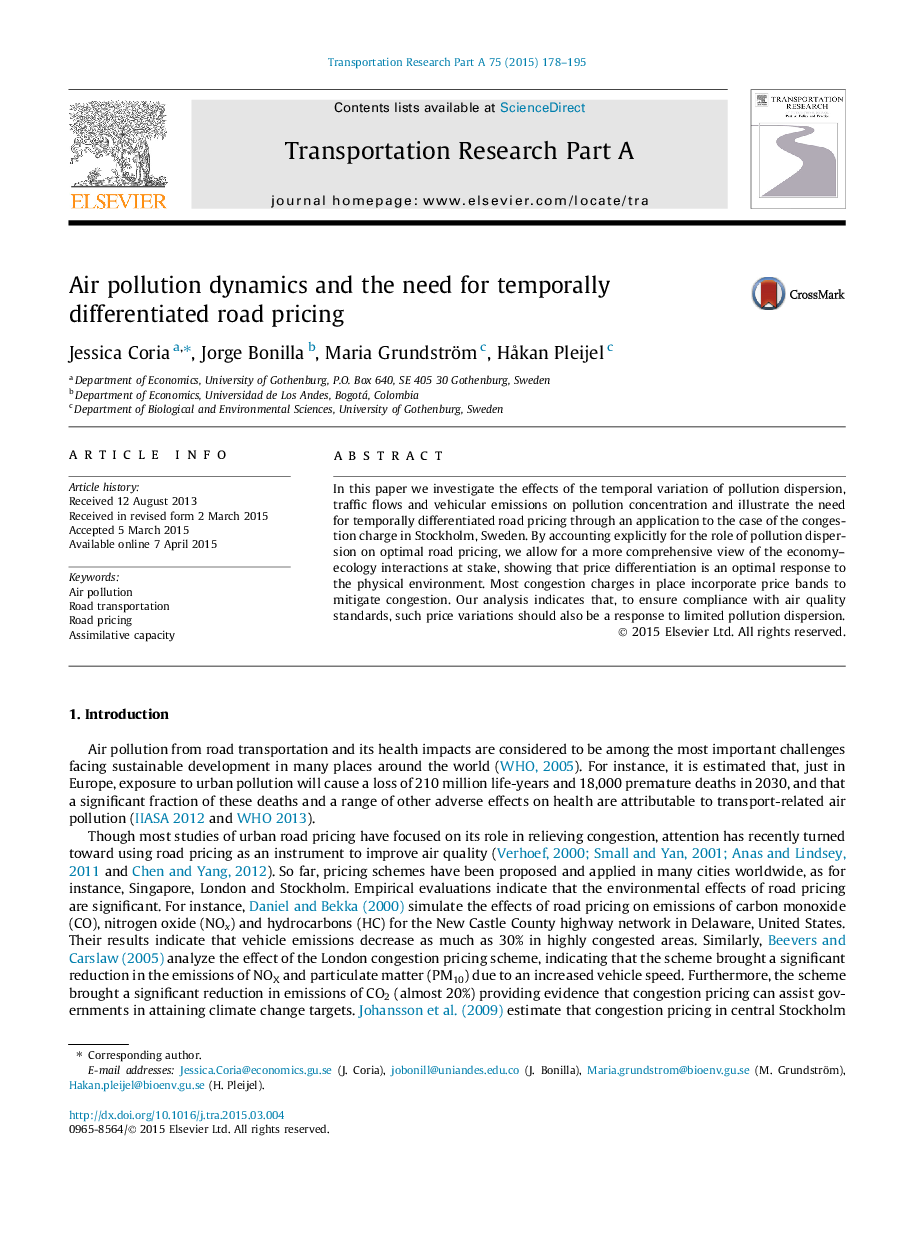| Article ID | Journal | Published Year | Pages | File Type |
|---|---|---|---|---|
| 310442 | Transportation Research Part A: Policy and Practice | 2015 | 18 Pages |
•We model road pricing that takes account of the variations in pollution dispersion.•Price differentiation is an optimal response to the physical environment.•We develop an application to the case of the Stockholm’s congestion charge, Sweden.•Our scheme results in sizeable reductions of pollution.
In this paper we investigate the effects of the temporal variation of pollution dispersion, traffic flows and vehicular emissions on pollution concentration and illustrate the need for temporally differentiated road pricing through an application to the case of the congestion charge in Stockholm, Sweden. By accounting explicitly for the role of pollution dispersion on optimal road pricing, we allow for a more comprehensive view of the economy–ecology interactions at stake, showing that price differentiation is an optimal response to the physical environment. Most congestion charges in place incorporate price bands to mitigate congestion. Our analysis indicates that, to ensure compliance with air quality standards, such price variations should also be a response to limited pollution dispersion.
